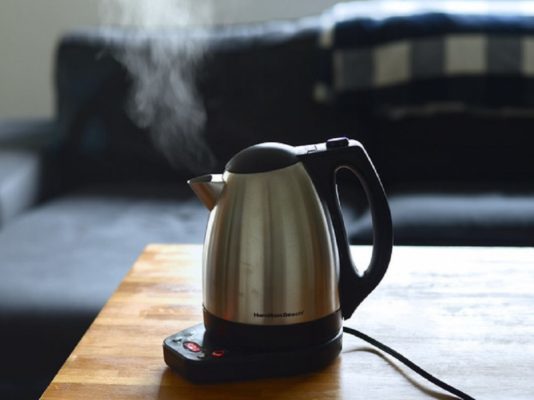 From ancient times in Russia they said: "Summer day feeds the year!". And today, any self-respecting hostess makes reserves for the winter. Vegetables and fruits for supplies can be grown in your garden or garden or bought in the market. Meat products are also being preserved.
From ancient times in Russia they said: "Summer day feeds the year!". And today, any self-respecting hostess makes reserves for the winter. Vegetables and fruits for supplies can be grown in your garden or garden or bought in the market. Meat products are also being preserved.
Why sterilization is needed
The content of the article
- Why sterilization is needed
- Preparing cans for sterilization
- Sterilization of cans on a teapot
Preservation is a complex process. Each of its steps is responsible. It is important not only to strictly follow the recipe for the preparation of blanks, but also to maintain perfect cleanliness at all stages. This applies to food and utensils. Indeed, if the processing of vegetables and fruits is insufficient or the dishes are poorly washed, bacteria will remain in the workpiece, which during storage will multiply. The contents will begin the fermentation process. It may end with the fact that the lid on the jar will swell, break and the fermented product will stain everything. Even if this does not happen and the lid remains in place, to eat such an appetizer or jam is dangerous to health - poisoning is possible. Therefore, you need to stock up on patience, time and strictly follow all stages of conservation.
Sterilization happens:
- in the oven;
- in the microwave;
- in a pan;
- for a couple;
- over the kettle;
- in a double boiler;
- in a slow cooker;
- in the dishwasher.
Preparing cans for sterilization
Before choosing one of the sterilization methods, it is necessary to properly prepare the banks for this process.
IMPORTANT! Remember that cans should be sterilized approximately two hours before preservation.
Actions before sterilization:
- Carefully inspect the selected dishes for chips and cracks. This is a prerequisite! The presence of the slightest crack will cause the jar with hot contents to burst not only on the kitchen table, but also in your hands. Not only is it possible to get injured or burned, it also spoils the workpiece, carefully and lovingly prepared.

- Banks are better not to take new ones, but already used ones. This glass is already tempered, therefore, more durable.
- The purity and integrity of the enamel on the lids is also an important condition. It is necessary to inspect for rust on them. In disposable covers that are rolled using a seaming machine, it is imperative to check whether there is an elastic band in the inner groove.
- To wash the containers, it is advisable to take a new clean sponge. Then you can leave it for future use at the next preservation.
- You need to wash the dishes very carefully. In hot water, using soda or detergent. Especially you need to pay attention to the neck, dirt often accumulates there. Do not forget to thoroughly wash the bottom of the container. After using the detergent, rinse well in a large volume of water.
- If reusable used caps are selected, they must also be thoroughly washed. In no case should they be rusted.
Sterilization of cans on a teapot
It is simpler and more convenient to sterilize cans on a teapot - no additional utensils and appliances are required. The only thing needed is to spread on the table a clean kitchen towel ironed with a hot iron.
REFERENCE! The method is best suited for a small number of cans with a volume of 500-700 ml.
Process steps:
- We put a kettle of water on the fire.

- We put a jar on the spout of the teapot. If the length of the nose allows, you can not keep it - just hang it.
- Another option is to remove the lid and, instead of it, put the jar with its neck down. This can be done if the diameter of the neck of the kettle allows. You can simultaneously sterilize one jar on the neck of the kettle, the other on the spout.
- We put lids in the water.
- We wait until the water boils and steam comes out of the nozzle.
- Sterilization time for 2-3 liter cans is 15 minutes. For a smaller volume - 10 minutes.
- If you have to keep the bank, be sure to do it using tacks! Containers from hot steam will heat up very quickly, you can burn yourself or drop it.
- You need to be prepared for the fact that the steam will go into the room. Condensation formed from the can - drip onto the stove or nearby.
- After the set time, remove the dishes from the kettle (do not forget to take the oven mitts!). We put on a spread towel upside down. Let it flow.
- Boiling water from the kettle should be drained. Remove the covers and lay them on a towel.
Dishes for preservation ready. Successful blanks!

